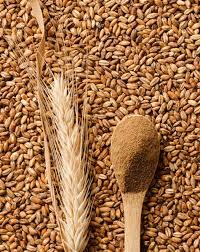This report evaluates the market opportunity and feasibility of establishing a sorghum malt production facility in Nigeria to supply the country's brewing industry. Sorghum is an indigenous cereal grain well-suited to Nigeria's climate that can be malted as a cost-effective substitute for imported malted barley.
Market Analysis
Nigeria has a large and growing brewing industry, driven by rising population, incomes, and urbanization rates. Major breweries have traditionally relied on imported malted barley as their primary grain input. However, the high cost of imports and foreign exchange constraints have raised demand for locally-sourced alternatives like sorghum malt:
Nigerian brewery industry currently source less than 20% of their malt requirements domestically. The potential market for sorghum malt is estimated at 250,000 metric tons annually, and import substitution could save brewers $70+ million in foreign exchange annually. Government policies incentivize the use of locally-grown products like sorghum.
The combination of market demand, cost benefits, and government support create highly favorable conditions for sorghum malt production.
The proposed facility would source sorghum from local outgrower farmers and undertake the malting process on-site, which involves acquiring 6 acres of land plus facility construction, installing commercial malting equipment with 200,000 MT annual capacity, developing a sorghum outgrower scheme to ensure consistent supply, establishing quality control and food safety processes, and building storage facilities integrated with brewery distribution.
Financial Analysis
With a total capital investment of $35 million, the projected annual revenues by Year 5 are $85 million, yielding an IRR of 27% over a 5-year period. Operational costs are minimized by sourcing local sorghum and reducing transportation/import costs compared to barley malt.
In summary, the abundant local sorghum supply, strong market demand, cost benefits, and import substitution potential make this an attractive investment opportunity to establish a large-scale sorghum malting operation in Nigeria.
Market Analysis
Nigeria has a large and growing brewing industry, driven by rising population, incomes, and urbanization rates. Major breweries have traditionally relied on imported malted barley as their primary grain input. However, the high cost of imports and foreign exchange constraints have raised demand for locally-sourced alternatives like sorghum malt:
Nigerian brewery industry currently source less than 20% of their malt requirements domestically. The potential market for sorghum malt is estimated at 250,000 metric tons annually, and import substitution could save brewers $70+ million in foreign exchange annually. Government policies incentivize the use of locally-grown products like sorghum.
The combination of market demand, cost benefits, and government support create highly favorable conditions for sorghum malt production.
The proposed facility would source sorghum from local outgrower farmers and undertake the malting process on-site, which involves acquiring 6 acres of land plus facility construction, installing commercial malting equipment with 200,000 MT annual capacity, developing a sorghum outgrower scheme to ensure consistent supply, establishing quality control and food safety processes, and building storage facilities integrated with brewery distribution.
Financial Analysis
With a total capital investment of $35 million, the projected annual revenues by Year 5 are $85 million, yielding an IRR of 27% over a 5-year period. Operational costs are minimized by sourcing local sorghum and reducing transportation/import costs compared to barley malt.
In summary, the abundant local sorghum supply, strong market demand, cost benefits, and import substitution potential make this an attractive investment opportunity to establish a large-scale sorghum malting operation in Nigeria.
1.1 Market Overview and Demand Drivers for Sorghum Malt
1.2 Project Description: Vertically Integrated Sorghum Malting Facility
1.3 Project Feasibility and Financial Highlights
Sorghum Industry Analysis in Nigeria
2.1 Nigeria's Position as a Leading Sorghum Producer
2.2 Sorghum Utilization Trends: Food vs. Industrial Applications
2.3 Government Policies and Incentives for Sorghum Production
Sorghum Malt Market Analysis
3.1 Growing Demand from the Brewing Industry (Lager Beers)
3.2 Potential for Non-Alcoholic Beverage and Food Applications
3.3 Import Reliance and Opportunity for Domestic Sorghum Malt Production
Project Feasibility Analysis
4.1 Proposed Business Model: Vertically Integrated Malting Operation
4.1.1 Sorghum Sourcing Strategy (Outgrower Schemes, Contract Farming)
4.2 Production Process Flowchart (Sorghum Cleaning, Steeping, Germination, Kilning)
4.3 Technical Requirements: Equipment and Infrastructure Needs
Financial Projections
5.1 Capital Expenditure Breakdown (Land Acquisition, Equipment, Construction)
5.2 Operational Cost Analysis (Sorghum Procurement, Processing Costs, Labor)
5.3 Revenue Projections and Market Penetration Strategy
5.4 Profitability Analysis (Payback Period, Internal Rate of Return)
Market Strategy and Sales Channels
6.1 Target Market Definition (Breweries, Food & Beverage Companies)
6.2 Competitive Landscape and Differentiation Strategies (Quality, Consistency, Local Sourcing)
6.3 Sales and Distribution Channels (Direct Sales, Partnerships with Distributors)
Risks and Challenges
7.1 Fluctuations in Sorghum Prices and Supply Chain Disruptions
7.2 Meeting Quality Standards for Sorghum Malt (Food Safety Regulations)
7.3 Competition from Established International Malt Suppliers
Opportunities and Success Factors
8.1 Government Support for Local Malt Production Initiatives
8.2 Building Strong Relationships with Breweries and Food Manufacturers
8.3 Focus on Innovation: Exploring New Malt Applications
8.4 Sustainability Practices and Environmental Responsibility
Conclusion and Recommendations
9.1 Recap of Project Feasibility and Market Potential
9.2 Overall Assessment of Project Viability and Risk Mitigation Strategies
9.3 Recommendations for Business Development and Implementation
Appendix
10.1 Detailed Financial Projections and Assumptions
10.2 Market Research Data and Sources
10.3 Regulatory Requirements and Permits for Sorghum Malt Production
10.4 Potential Suppliers for Sorghum, Equipment, and Technology
$300 (N350,000)
Get your Indicative loan offer: admin@fundxperts.com
Contact: admin@fundxperts.com

